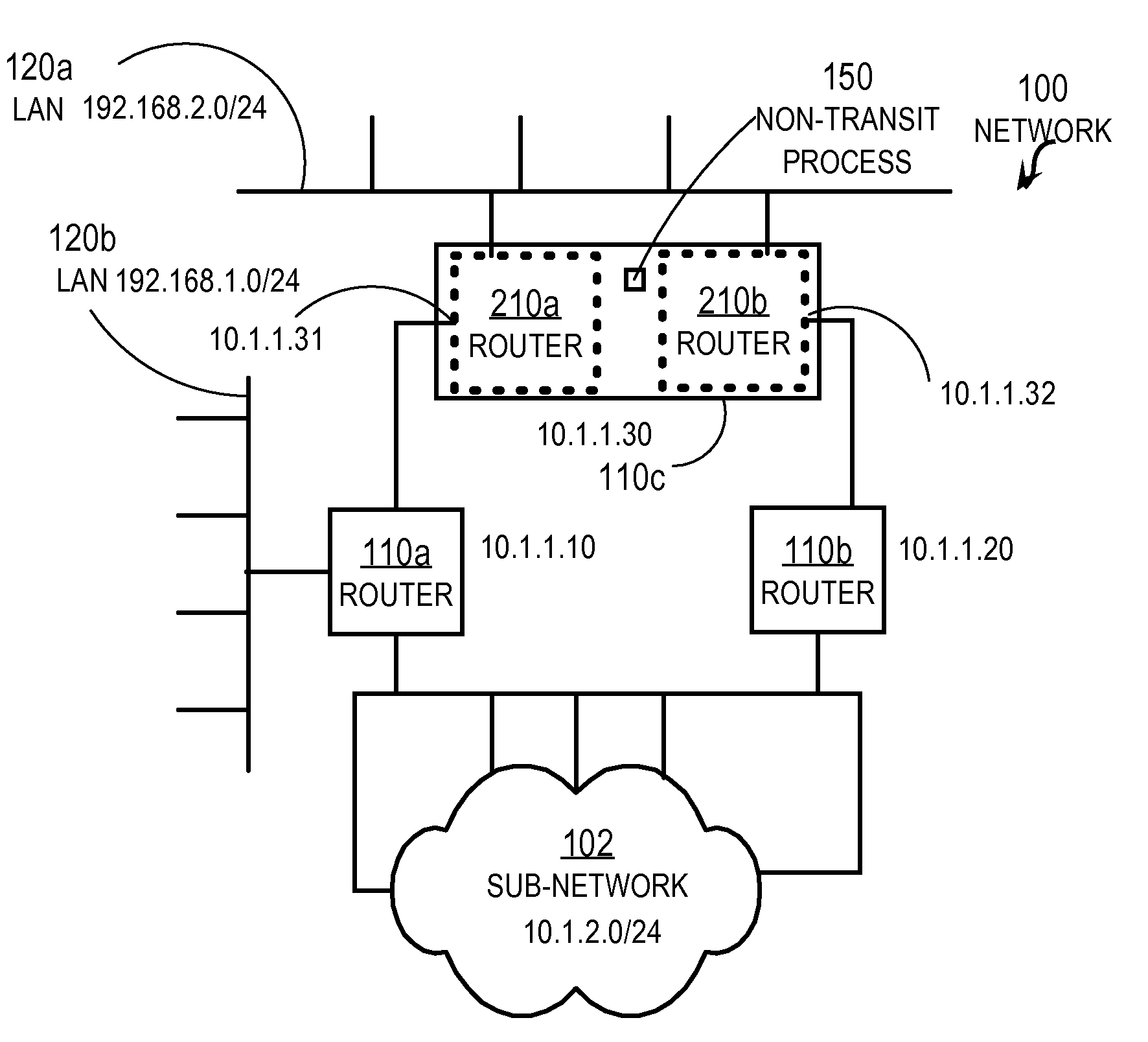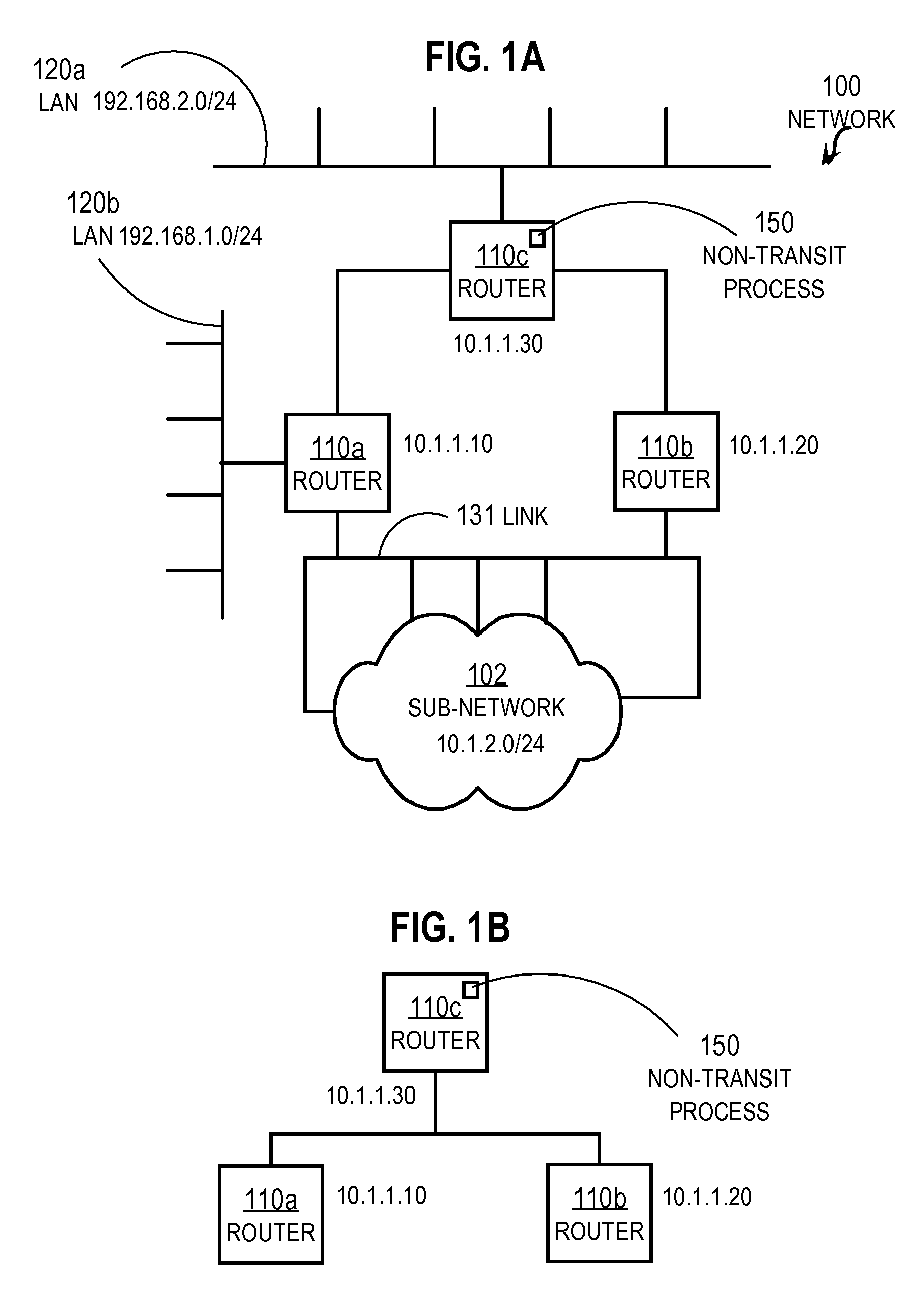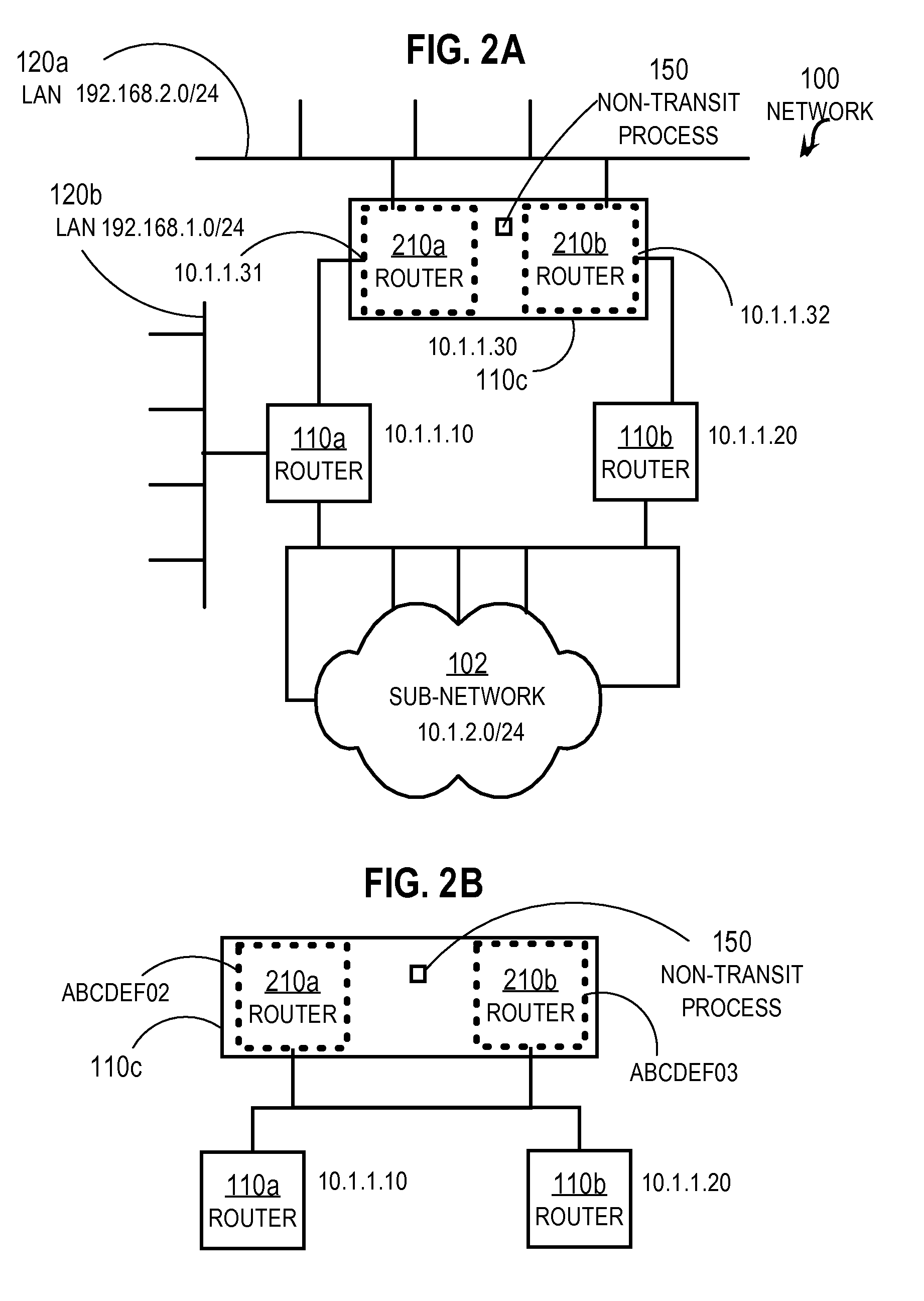Creating Non-transit Nodes in a Link State Network
a link state network and non-transit node technology, applied in the field of sharing routing information, can solve the problems of not working the technique used in distance vector protocols when using link state protocols, and the modification of the link state protocol used on all other routers in the sub-network is not desirabl
- Summary
- Abstract
- Description
- Claims
- Application Information
AI Technical Summary
Benefits of technology
Problems solved by technology
Method used
Image
Examples
Embodiment Construction
[0015]Techniques are described for creating a non-transit router in a link state protocol. In the following description, for the purposes of explanation, numerous specific details are set forth in order to provide a thorough understanding of the present invention. It will be apparent, however, to one skilled in the art that the present invention may be practiced without these specific details. In other instances, well-known structures and devices are shown in block diagram form in order to avoid unnecessarily obscuring the present invention.
[0016]Descriptions of the invention provided below are given in the context of stub routers for the Open Shortest Path First (OSPF) protocol implemented in a private enterprise network; however, the invention is not limited to this context. In other contexts, the same or other link state protocols are used in the same or different networks with non-transit routers deployed in the same or different arrangement.
1.0 Overview
[0017]According to one se...
PUM
 Login to View More
Login to View More Abstract
Description
Claims
Application Information
 Login to View More
Login to View More - R&D
- Intellectual Property
- Life Sciences
- Materials
- Tech Scout
- Unparalleled Data Quality
- Higher Quality Content
- 60% Fewer Hallucinations
Browse by: Latest US Patents, China's latest patents, Technical Efficacy Thesaurus, Application Domain, Technology Topic, Popular Technical Reports.
© 2025 PatSnap. All rights reserved.Legal|Privacy policy|Modern Slavery Act Transparency Statement|Sitemap|About US| Contact US: help@patsnap.com



